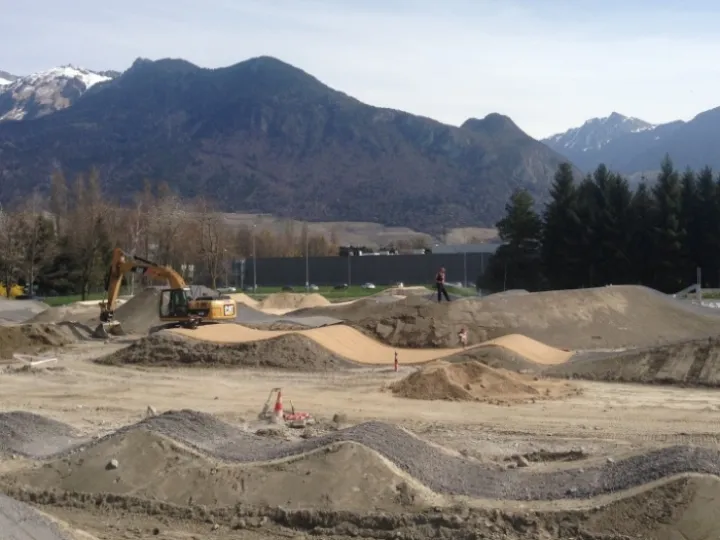Sub-base layers for roads and pavements
Installing sub-base layers
Many roads, drives, pavements and parking areas require an underground base that will spread the load of the surface paving material and also provides adequate drainage.
Granular material is laid over the soil or subsoil and compacted to create the right conditions for putting down such surface materials as paving blocks, asphalt or concrete.
This lower layer called the sub-base layer and a properly laid foundation will prevent subsidence, aid drainage, increase load bearing capacity, be sustainable and protect against wear and tear.
How sub-base layers work
The sub-base layer works by distributing the surface load over a wide area, and it dramatically improves the ability of the top surface to carry heavy loads and maintain integrity notwithstanding long and repeated use.
The value of a properly laid sub-base layer, even a thin one, cannot be overestimated. Just a few centimetres of crushed aggregate can help ensure a reliable surface that is capable of carrying traffic for many years without breaking up or suffering some other deformation.
A well-compacted sub-base layer can even be re-used after the surface layer has been stripped off. Tarmacadam, for example, can be replaced by brick or paving slabs with just a little tidying up and levelling.
Don't skimp on the sub base
It is sometimes the case that building contractors will omit to lay a sub-base to cut costs and speed up groundworks on a project. It is an omission that can have serious consequences later on.
Clients may be unaware of the need for a well constructed and compacted base layer beneath a driveway or path but, without one in place, it is almost certain that the surface will quickly deteriorate with ruts and channels forming on the surface to create even more problems.
Materials used in subbase layers
Many materials can be used to create a sub-base layer, and the thickness can vary according to the traffic that the surface layer is likely to experience.
The thickness can range from 75mm for a simple path, 150mm for a driveway and 225mm or more on heavily used roads. For more substantial developments, Highways England produces standards and documentation relating to the design, construction and maintenance of highways.
For typical paths, tracks, drives and car parks, the sub-base layer can be built using a combination of materials such as a higher quality stone above and low grade crushed concrete beneath.
The materials used may be either unbound granular or bonded with a weak cement mix. Unbound granular is usually crushed stone, slag or concrete while cement-bound solutions can come in a multiplicity of types and are sometimes reinforced with steel mesh or polymer fibres if heavy loads are expected.
When the granular material comes from quarries, it can arrive in a range of mixes depending on the nature of the material and the binder used.
Aggregates can be mixed with cement and a small amount of water. The resultant sub-layer is compacted with rollers to produce an elastic but durable paving base.
Compaction the key to a durable surface
Proper compaction is key to getting a long-lasting surface, and sometimes aggregates can be bonded with cement.
A cement treated sub-base layer can have economic, technical and environmental benefits over an unbound sub base. The high elasticity of a cement bonded layer can reduce stress in the top coat, especially with bitumen surfacing, and ensure a longer life for pavements and roads.
The cement binding also allows the greater use of cheaper low-grade aggregates and a thinner asphalt top layer making the economic benefits substantial and clear.
Cement-treated sub-bases are widely used in the building of roads, parking areas, outside storage areas and similar types of infrastructures with the materials used covered by a number of European standards.
There are several online sources for guidance notes on constructing sub-bases for roads and pavements. The Highways Agency's Interim advice note 73/09 for road pavement foundations (Draft HD25) is available online here.
Clark & Kent Contractors are the experts in sub-base laying and soil compaction. Call us now on 01630 672329.
Clark&Kent Services Hire
Providing quality specialist plant hire equipment for construction services


